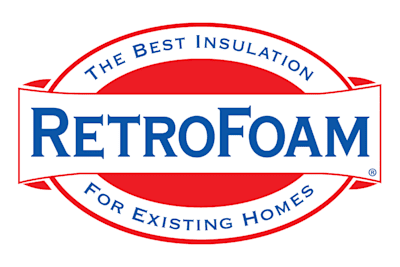What is Vermiculite Insulation, and Is It Asbestos?


If your home was built between the 1940s and 1990s and you’re considering upgrading your insulation to something modern like foam, there’s something you need to look out for first: vermiculite insulation.
It might sound like just another outdated insulation material, but this one comes with some serious red flags, especially when it comes to asbestos. In this article, we’re going to break down everything you need to know:
- What is vermiculite?
- Is vermiculite asbestos?
- Does all vermiculite contain asbestos?
- What should you do if you find vermiculite in your home?
Let’s jump right in so you can make the safest, most informed decision for your home.
What is Vermiculite?
Vermiculite is a natural mineral that expands when it’s heated, according to the U.S. Environmental Protection Agency.
This puffed-up version of the mineral made it a popular insulator because of its lightweight, fire-resistant, and insulating properties. From the 1940s to the 1990s, it was commonly used as a loose-fill insulation in attics and wall cavities.
So far, it sounds pretty harmless, right? But here’s where it gets tricky.
Is Vermiculite Asbestos?
Let’s clear this up right away: vermiculite is not asbestos – but it can contain asbestos.
The confusion comes from where a large portion of vermiculite came from: a mine in Libby, Montana, which happened to be contaminated with a type of asbestos called tremolite, according to the EPA. This mine supplied the majority of vermiculite used during the insulation boom of the mid-20th century.
As a result, many of the vermiculite insulation installations in homes during that period are potentially contaminated with asbestos fibers.
So, while the phrase “vermiculite is a type of asbestos” isn’t technically true, it’s easy to understand where the misconception comes from.
Why is Vermiculite Insulation a Concern?
The big issue here is asbestos exposure.
Asbestos is a known carcinogen. It can cause serious health issues like:
- Lung damage
- Lung cancer
- Mesothelioma (a rare and aggressive cancer)
The worst part? These asbestos-related illnesses can take years or even decades to show up after exposure. So, even if everything seems fine now, the long-term risks are not to be taken lightly.
Is All Vermiculite Asbestos?
No, not all vermiculite is asbestos – but you can’t tell just by looking at it.
That’s why professional testing is the only way to know for sure whether the vermiculite in your home is safe or poses a health risk.
What Should You Do If You Have Vermiculite Insulation?
If your insulation contractor finds vermiculite during your retrofit or inspection, here’s what you need to do.
Get the Vermiculite Tested
Before any work can begin, you need to know what you’re dealing with.
A lab must test a sample to determine if asbestos is present. A trusted lab that some RetroFoam dealers recommend is EMSL Analytical.
Do not try to collect or disturb the vermiculite yourself. Even something as simple as sweeping or vacuuming can release harmful asbestos fibers into the air.
Wait for the Results
Once the lab tests the sample, there are two possible outcomes.
The test comes back negative for asbestos:
- If the vermiculite is in the attic, it can be removed like any other loose-fill insulation.
- If it’s in the walls and doesn’t contain asbestos, foam insulation can be injected directly without any problem.
The test comes back positive for asbestos:
- The vermiculite must be removed by a licensed abatement company that follows safety and legal guidelines.
Only after it’s removed will your home be ready for new insulation like RetroFoam or spray foam.
Caution: Don't Try This at Home
We can’t stress this enough – do not disturb vermiculite insulation.
The EPA and professionals across the industry recommend extreme caution when it comes to handling any materials that may contain asbestos.
If you know, or even suspect, you have vermiculite in your home, get it tested immediately. It’s the only way to ensure your home is safe and ready for upgrades.
What Happens After the All-Clear?
Once you’ve tested your vermiculite and taken the necessary steps (whether that’s removal or a negative asbestos test), it’s time to get to the fun part – upgrading your insulation.
Visit our Dealer Finder to connect with a RetroFoam professional near you. They’ll help you make your home more comfortable, more energy efficient, and a whole lot safer.
Key Points:
- Vermiculite insulation was commonly used between the 1940s and 1990s.
- Vermiculite is not asbestos, but it can contain asbestos, especially if it came from Libby, Montana.
- You can’t tell by sight whether vermiculite has asbestos. It must be tested.
- Do not disturb vermiculite insulation until you know it’s safe.
- If asbestos is present, only licensed professionals should handle removal.
- Once you have the all-clear, foam insulation can safely be installed.
Related Articles
Knob and Tube Wiring and RetroFoam: Can You Add Insulation to an Older Home?
Clearing the Air: Should You Remove Old Insulation Before Re-Insulating Your Home?
How to Insulate an Old House with RetroFoam without Damaging the Aesthetic
About Amanda Emery
Amanda previously has worked as a breaking news and crime reporter, TV news producer, and editor. As a journalist, she has won several awards from The Society of Professional Journalists - Detroit Chapter and the Michigan Press Association. Amanda uses her experience as a journalist to write content that will help educate homeowners on foam insulation benefits. When Amanda isn’t writing, she’s spending time with her husband Chris, daughter Lilith-Maeve, and rescued huskies Danger and Wendigo. She also loves knitting, making art, and cooking.


